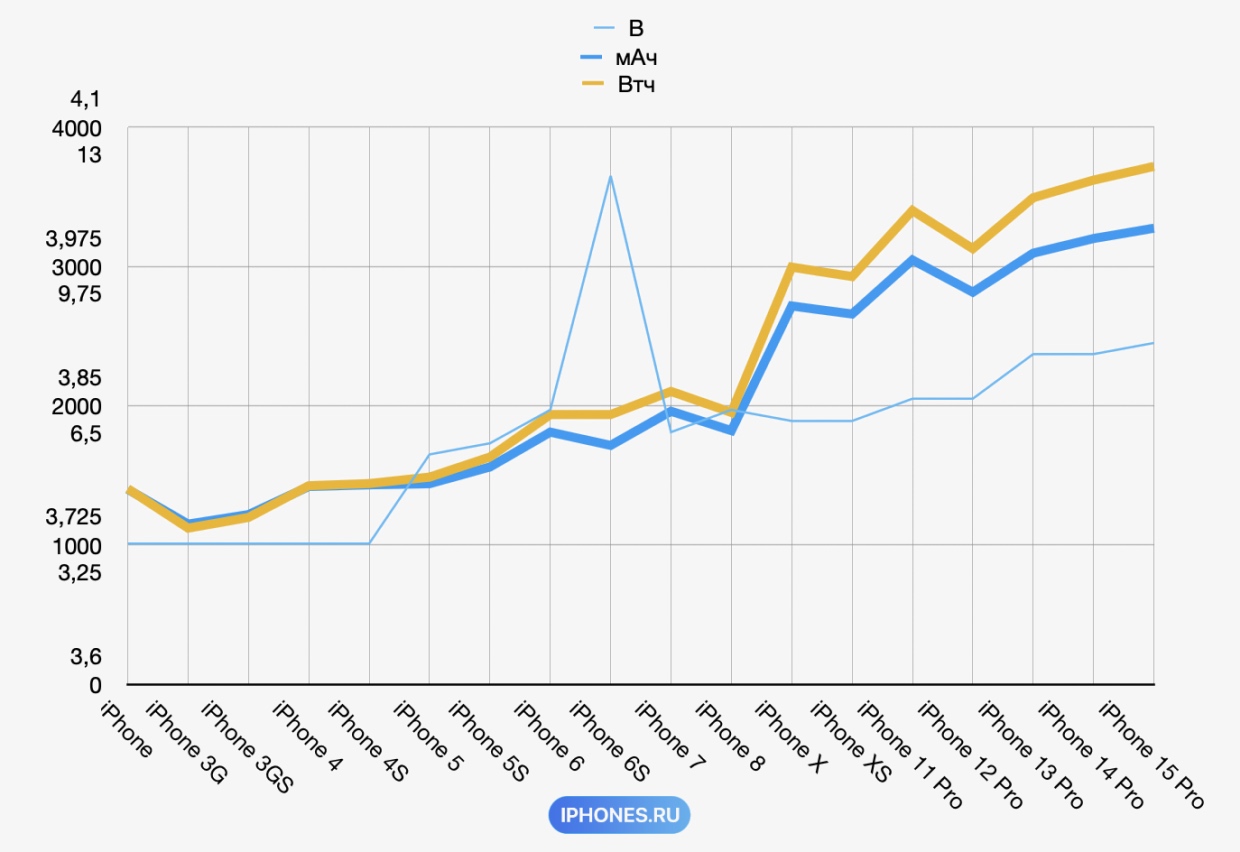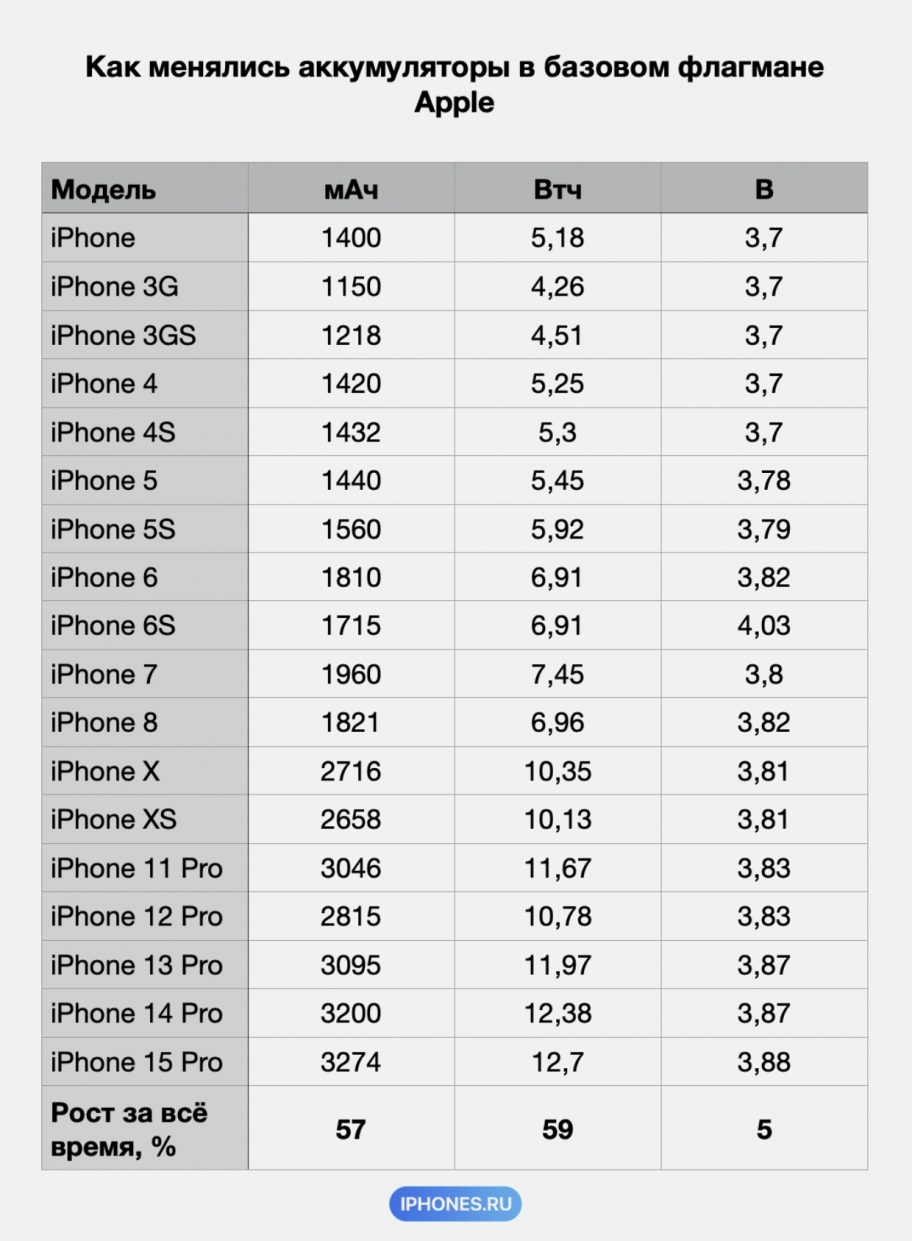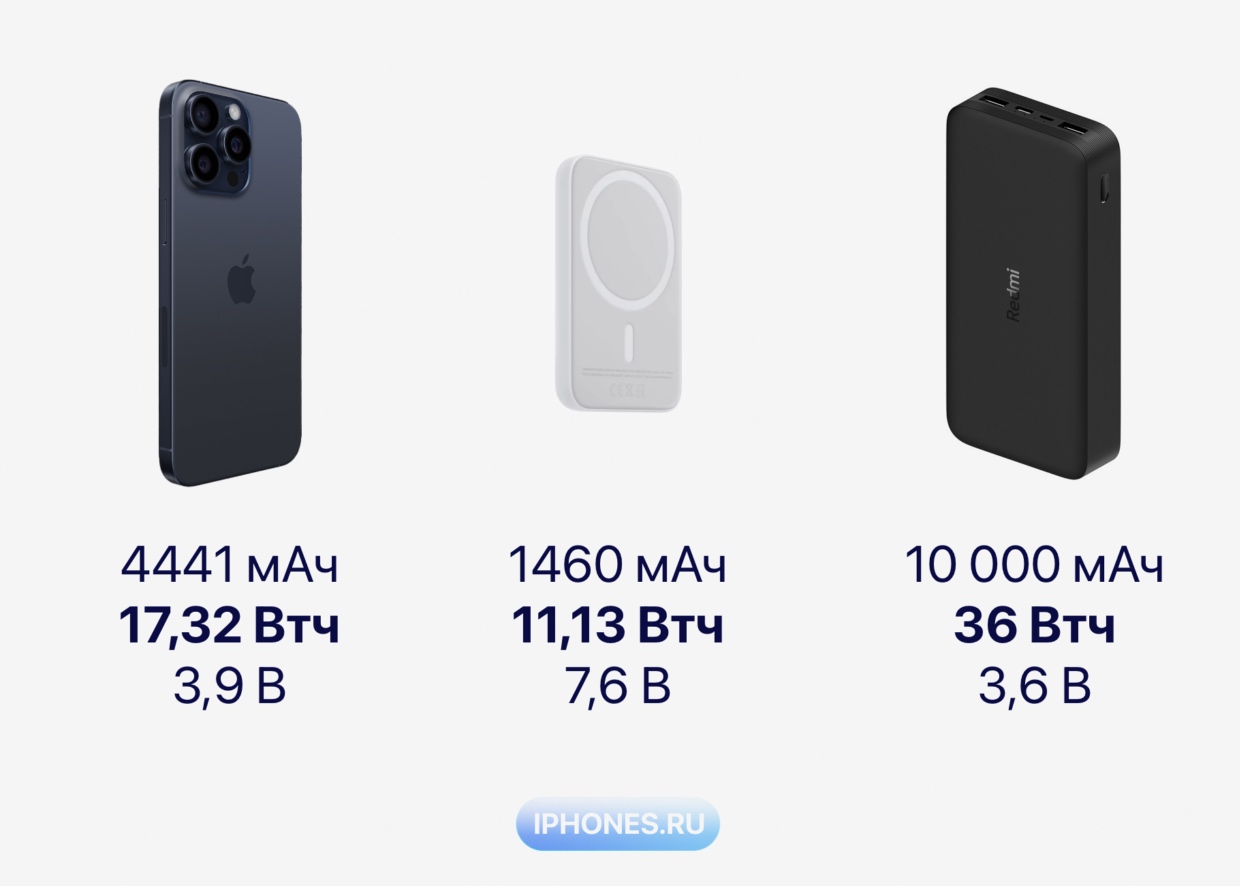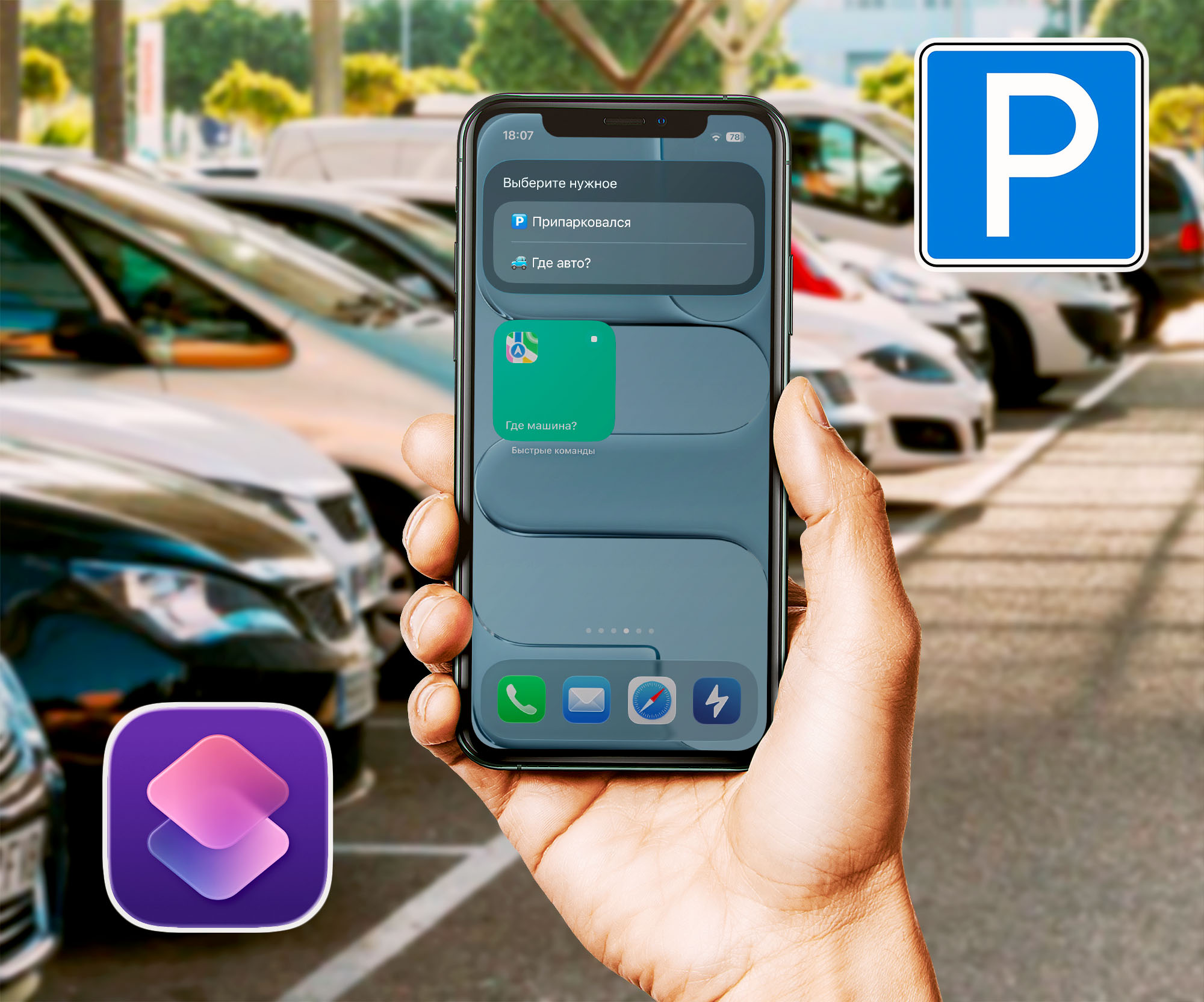From year to year I see one mistake and the same mistake among professional journalists and bloggers.
For some reason they measure the battery capacity of the iPhone, Apple Vision Pro and MacBook in such a stupid metric as. Yes, to the stupid.
But in those same Apple reviews, they judge that the company never talks about the characteristics of presentations, in documentation and on the website. It simply states: “All-day battery or 29 hours of video streaming.”
We believe that marketers avoid precise metrics because the focus is on the user experience rather than competing on abstract metrics.
But by that logic, we didn’t pay attention to the 120Hz ProMotion screen, didn’t show the differences between 12MP and 48MP, didn’t mention the number of cores in the GPU and the number of operations in the Neural Engine on the iPhone. And yet Apple does this every presentation.
The fact is that the problem is so technical that Apple was too lazy to explain. Although the answer is here, on a surface.
Below are some examples and let’s see what the point is.
The paper batteries of the MacBook Pro 16 and iPad Pro 11 are the same. In fact, the difference is three times

The other day I wondered what size the battery was in the 11-inch MacBook Air and how it compares to the current iPad Pro 11 and MacBook Pro 16. I dug up some unexpected details.
Check out the specs for three Apple devices.
• MacBook Air 11 (2015): Powered by a 5110 mAh battery.
• iPad Pro 11 (M4): built-in battery with a capacity of 8340 mAh.
• MacBook Pro 16 (M3 Pro): has a battery capacity of 8690 mAh.
The conclusions that emerge are strange.
If the iPad uses significantly less battery than the MBA 11 once did, it shouldn’t use significantly more power: progress, after all.
The MacBook Pro weighs 2.14 kg versus 0.44 kg for the iPad Pro, its screen is exactly twice as large, its graphics cores are more power hungry – any system consumes more energy, and the battery can’t possibly be the same capacity.
If you take all the devices apart, everything falls into place. The batteries are indeed completely different in size, on the MacBook Pro they are much larger than on the iPad Pro and MacBook Air, and in the latter two they are very similar.

And there is that very internal characteristic that puts everything in its place. Only it has meaning in these figures and will be a unified indicator. Energy capacitymeasured in Watt/h.
Look:
• MacBook Air 11 (2015): 38.75 Wh
• iPad Pro 11 (M4): 31.29 Wh
• MacBook Pro 16 (M3 Pro): 99.6 Wh.
With this characteristic, it is already easy to conclude that processors and screens have become more energy efficient, and why the battery in the large MacBook allows it to work three times longer than the iPad.
Briefly about protection. mAh loses discharge rate

The fact is that capacity can be designated by both units of measurement: mAh and Wh. However, for several months of mobile electronics, the Wh indicator has always been more objective, determining the basis of power (W) multiplied by time (hours).
This is because Power, W) calculated by multiplying voltage (V, Volt) on current strength (A, Ampere), while the mAh indicator only respects the current strength (A), voltage voltage (V)What determines how quickly a battery can discharge?
The secret is that iPad and MacBook batteries have voltage (V). In laptops it is always higher, and in iPad it is lower and close to smartphones.
And here we come to the answer to why it is impossible to rely on the mAh indicator even between two generations of smartphones, or on different classes of devices.
How the voltage changed in all iPhones. Literally different types of batteries


To see the external, the change in all three basic iPhone battery indicators over the year was analyzed.
This table clearly shows that the battery readings are measured almost every year. match grew.
A noticeable jump occurred when Apple released the iPhone 6S. People were then surprised why, with a reduced battery capacity(1715 mAh against 1810 mAh in the iPhone 6) and a more powerful processor, the claimed battery life remains the same.
There was no secret: the battery capacity remained the same, there was just a limit to the maximum increase in voltage(4.03 V against 3.82 V) and when taking into account the power in Wh, the indicator is literally the same as in the iPhone 6 (6.91 Wh).
At the same time, the new processor was more energy efficient and spent less battery power at the same normal speed. As a result, comparing them by mAh was as incorrect as comparing iPad and MacBook batteries.
At the same time, over 17 years, the voltage gradually increased by 5%. It changed by a hundredth of a share, and sometimes remained the same, but this difference ultimately showed that the basic flagship model added 57% in its capacity if you look at the mAh indicator, and 59% if you focus on Wh.
For the same reason, the external battery math does not work.

If you’re wondering why your 10,000mAh battery can’t charge promax just once, then here is the answer. Battery manufacturers are deceiving you.
It’s not that there’s a big loss of capacity, it’s that you should be looking at the energy capacity in Wh. Power banks typically have a lower voltage than your smartphone, so they need more of those milliamp hours to charge it.
For the same reason, people were wrongly outraged by the low mAh rating of Apple’s MagSafe external battery.
I also noticed in the review that although this figure did not reach even half of the iPhone 13 Pro (1460 mAh versus 3095 mAh), in reality it could charge the smartphone by 70%, because its energy capacity is 11.13 Wh (in the iPhone 13 Pro 11.97 Wh).
Apple MagSafe Battery Review: One of the Best Buys of the Year
Forget mAh and check only Wh

Basically, almost all batteries now have a voltage of about 3.6 V, so their current is the same. But if you show an expensive battery with a low mAh, most likely, everything is fine with its apparent capacity in Wh
What is getting?
Although in charge capacity (mAh) less demand, it is a less reliable indicator. The capacity of the battery in a laptop cannot be used on a smartphone. And even between two different smartphones, this indicator cannot be compared, since it does not take into account such a metric as voltage, measured in Voltas.
From voltage (V) depends on a more objective indicator of battery capacity, which is called energy capacity (Wh). since its calculation also takes into account Current strength (A)And voltage (V) Each individual battery, this characteristic makes all batteries equal.
▶ If you take absolutely identical devices (but not with different processors) and at the same time the same Wh values in their batteries and measure how long they work, performing two identical tasks, you will definitely know that, finally, one processor is more energy efficient than the other.
▶ If you take absolutely identical devices (without different processors) and at the same time the same mAh indicators in their batteries and measure how long they work, performing two identical tasks, when calculating the results you will also have to take into account the power. voltage (V).
The Wh rating allows you to directly compare different batteries and processor energy efficiency, or even performance across different devices.
Now you know what you’ll get match in advertising, at least the battery, at least the smartphone is not worth it. Before judging how long a new device will work, first of all check its most important indicator, Wh.
Source: Iphones RU
I am a professional journalist and content creator with extensive experience writing for news websites. I currently work as an author at Gadget Onus, where I specialize in covering hot news topics. My written pieces have been published on some of the biggest media outlets around the world, including The Guardian and BBC News.











